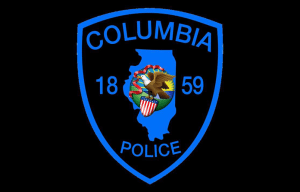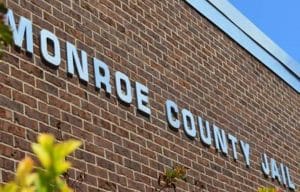State report card shows growth
The Illinois State Board of Education recently released the Illinois Report Card, showing that Monroe County schools have generally improved relative to last year even though the impact from the COVID-19 pandemic is still evident.
The annual report details a variety of statistics relevant to how individual schools, districts and the state on average are meeting educational goals.
Statewide, the Illinois Assessment of Readiness – which tests students in grades 3-8 on English language arts and mathematics – showed very similar results to last year.
The percentage of students meeting or exceeding IAR expectations is 30.1 in ELA – very slightly down from last year’s 30.2 – and 25.5 in math – up from 25.2 percent.
These figures remain much lower than 2019’s 37.8 percent in ELA and 31.8 in math.
SAT scores – used as the measurement for 11th graders – showed 29.8 percent of students above ELA expectations and 28.8 percent above math expectations.
These figures are slightly down from last year’s scores and an even further decrease from 2019.
Four-year high school graduation rates in the state stand at 87.3 percent, up from last year’s 86.8 percent and down from 2019’s 88 percent.
Gov. JB Pritzker recently commented on the state averages described in the Illinois Report Card, noting the challenges state education has faced amid the pandemic.
“To say that these last two-and-a-half years have been difficult for our teachers and our students would be an understatement,” Pritzker said. “What now seems like lifetimes ago, our educators in Illinois and throughout the nation had to navigate the sudden transition to online learning, all while working to give their students the support and resources they needed to not only thrive, but to survive.”
Local schools show somewhat more positive progress on their report cards.
For Waterloo schools, the percentage of students scoring at or above their grade level on the IAR was 48.1 for ELA and 43.4 for math, both improved from last year but still significantly lower than pre-pandemic.
Columbia schools showed similar progress, with 40.6 percent of students meeting their ELA goal and 45.9 percent meeting their math goal.
“I think that every year we will see growth,” Columbia Superintendent of Schools Chris Grode said. “I do think that if you look at the statewide data, COVID had a significant effect on our scores, and so I was excited to see that, I believe, when you look at our growth compared to the state average, we did do well.”
A much smaller school than Waterloo and Columbia, Valmeyer too showed small but positive growth with 24.7 percent of students meeting goals in ELA and 23.3 percent of students meeting their math grade level expectations.
When it comes to the SAT, Waterloo High School juniors saw a very small improvement in ELA – 39.5 percent – and a more notable push toward their pre-pandemic level in math – 41.8 percent.
The percentage of Columbia High School juniors meeting their ELA goals stands slightly up from last year at 43.7 while the percentage for math is slightly down at 43.6.
Valmeyer’s SAT percentages are both noticeably down from last year, with 20 percent of students meeting ELA expectations and just 10 percent of students meeting math expectations.
Local high school graduation rates stand at 91 percent for Waterloo, 96 percent for Columbia and 92 percent for Valmeyer – all largely unchanged over the last few years.
Grode noted that figure doesn’t necessarily describe the actual number of graduates, as it doesn’t account for those students who leave the school system during high school but are still included in the calculations from when they were freshmen.
Grode said sometimes situations beyond the control of the school occur, but generally students who don’t graduate are very rare.
Also concerning local high school students, the Illinois Report Card provides information on freshmen considered to be “on track,” meaning they have earned at least five full-year course credits without earning more than one failing grade in a core course.
This year, 95 percent of Waterloo’s former freshmen met those requirements, with 99 percent in Columbia and 97 percent in Valmeyer also reaching the standards.
Postsecondary enrollment is also addressed in the report card.
For Waterloo, 73 percent of students graduated with a high school diploma to go on to a two- or four-year college in the next 16 months, with 79 percent of Columbia students and 67 percent of Valmeyer students doing similarly.
The Illinois Report Card also describes schools with a summative designation which serves as a means to measure academic performance and student success.
All schools in Waterloo and Valmeyer received a “commendable” designation, the second-highest designation meaning they have no underperforming student group and a graduation rate higher than 67 percent.
Two of Columbia’s schools – Columbia Middle School and Parkview Elementary School – also received a “commendable” designation, while Eagleview Elementary School and CHS received an “exemplary” designation indicating they are performing in the top 10 percent of schools statewide with no underperforming subgroups.
Columbia Assistant Superintendent of Schools Alyssa Smith expressed her satisfaction with the district’s designations at the October school board meeting, specifically noting the middle school’s shift from “targeted” to “commendable.”
“In previous years, we had received a grant because we had an underperforming subgroup, and that group has made great strides and they are no longer an underperforming subgroup at the middle school, so we are ecstatic to have that news as well,” Smith said.
Smith and Grode both noted that, as the pandemic has impacted students’ personal interactions at all age levels, kindergarten readiness is a key area to address, with Smith noting teachers have had to deal with substantially more behavioral issues this year and last year.
They also expressed satisfaction with the district’s performance as a whole, with Smith expressing how proud she is of Columbia’s students and teachers for achieving the high designations and Grode noting that the district is generally performing as hoped with the impact of the pandemic.
“We’re seeing the school, really for the first year, as a normal year,” Grode said. “Now we’re dealing with the fallout from previous years, but I think we’re dealing with it very appropriately. I think we’ve done a lot of good things over the course of that time. Are there things that we can tweak and improve? Yes. … I think that we are definitely on the right track and things are going very, very well.”
Waterloo Superintendent of Schools Brian Charron said he and the Waterloo district only recently got the opportunity to look more closely at the report.
While he said the district will be able to offer additional comment following a presentation on the report at the next Waterloo School Board meeting, Charron said his impression of the district’s performance was generally positive.
“At the initial look, we performed at what we generally expect to see our scores each year, which is fairly well in comparison to other large unit districts,” Charron said. “We did have some subgroups that showed growth, and that’s always something important to look at too.”
Both Grode and Charron added that information from the report card doesn’t directly affect curriculum planning, though it does show the district where attention is needed.
For more information and to access the report, visit illinoisreportcard.com.






